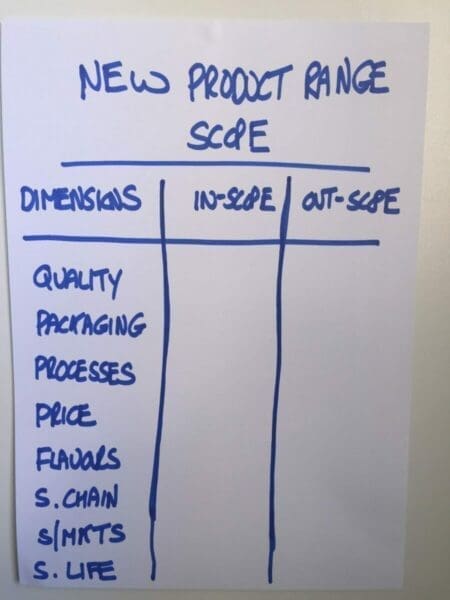Propel Your Projects to Success with These Game-Changing Strategies
The alarming facts about project management and why projects fail are:
- High performing organisations successfully complete 89% of their projects, whereas low performers only achieve 36%.
- 97% of organisations believe that project management is critical to business performance.
- Lack of involvement from senior management accounts for 33% of project failures.
#1 – Putting Off Getting Started
Ok, so you know that this project is important – ‘Yes’. You know that you are the project owner – ‘Yes’. You know why we are doing this -‘Yes’. So why have you done nothing for 2 weeks? ‘I’m busy’. The classic Time Management excuse, which actually means that this project is not a priority for them. Sitting behind this excuse is procrastination. Putting things off is one of the biggest hurdles to becoming an efficient and effective time manager.
Action to overcome why projects fail: Learn about why people procrastinate. This post called, ‘Why you procrastinate, how to stop, and why it is like a theme park‘, will help you identify which type of procrastinator you are, and how you can help yourself to avoid procrastinating. For example, if you struggle to start a big project because you just don’t know where to start take one simple and practical step. A little like buying a house. Instead of thinking of the next step as ‘Buy house’, think of the next step as ‘Phone Estate Agent to book an evaluation’.
#2 – Letting the Day Job Get in the Way
You’ve just agreed to take on a project. You have no project management experience and what you know of projects is that they are big, scary and that they usually fail. How will you manage this project without it consuming you and yet still do the day job? You need to adjust your current time system a little to be able to focus on keeping this project moving. This is not easy but very doable.
Action to overcome why projects fail: Complete the project plan template. Meet with colleagues and senior managers to get their feedback and buy-in. Update the project plan again. Then print the project plan and use a ‘trigger’. This is a term that BJ Fogg, a Stanford Professor, and the expert in creating habits, suggests. A trigger is simply a nudge to encourage you to review the project plan. Do not put the project plan one pager on the wall because we all go ‘blind’ to what is on the wall. Either put it in your diary, if you look at that each day, or your daybook (notebook), or in a place that you go to daily where you will see the project plan. This will encourage you to make progress on your project plan daily.
#3 – Lack of Preparation
Behind every successful project was a project manager that understood that landing a project was about the upfront preparation. The project preparation is the piece of the iceberg that we don’t see. The piece of the iceberg that sits below the water. Remember Titanic? If you’ve ever seen a picture of a total iceberg you’ll know that the piece that sits under the water is much bigger than the piece above the water and that it provides the foundation of the iceberg. Project preparation is the same.
Action to overcome why projects fail: The danger with preparing for a project is that we procrastinate because our only experience is of hearing about huge IT projects full of Gantt charts, humungous spreadsheets, and words like ‘Stakeholder’, ‘Time Critical’, & ‘Pinch Points’. Use our 1 page project plan template to help you prepare thoroughly, yet effectively, by completing just 1 page. A critical piece of this project plan template is getting the objectives written down and making them SMART. Contact us for the project plan template and a best practice project plan completing checklist.
Wikimedia Foundation [CC BY-SA 3.0, via Wikimedia Commons
#4 – The Ostrich Effect
The excitement of starting a new project and just getting on with it’ overtakes the need to take quality time to identify the potential risks upfront. The problem with not identifying the risks upfront is that the risks then hit the project owner with complete surprise. This undermines the project owner’s credibility, causes panic, and unfortunately delivers the self-fulfilling prophecy that ‘ well it was going to fail anyway’.
Action to overcome why projects fail: Take quality time yourself to mind map the risks, spend time with colleagues brainstorming, or asking a colleague what problems they see happening with this project. Edward De Bono, the published author on thinking, calls this ‘Black Hatting’, from the ‘Six Thinking Hats‘. Then, for each risk, decide whether to one of the following:
- Accept the risk – You accept that the risk may happen and when it does you’ll deal with it then because it is not a ‘show stopper’.
- Transfer the risk – You transfer the risk to another party. For example, the supplier accepts the risk for a quality problem by ensuring that their specification adheres every time that it is delivered.
- Mitigate the risk – You mitigate the risk, which means to minimise the risk by putting in place an action that will reduce the impact of the risk.
- Exploit the risk – You exploit the risk which is usually saved for risks that have a positive impact, e.g. Sales increase much more than you thought. This is done by putting an action in play to maximise the risk, for example, asking production to have a plan for how they would produce more.

#5 – Scope Creep
Scoping a project is important because without ‘boxing-in’ what is part of the project and what is not, senior management particularly tend to add to the project when they see it doing well. Phrases like, ‘You’re doing a great job, can you now add include the Procurement Team because they need this too’. The problem is that a well thought project that is gathering great speed now has to take a corner at 90mph and is likely to crash and burn.
Action to overcome why projects fail: Take a fresh page and list all the possible ‘dimensions’ of your project in column 1, then add ‘in scope’ at the top of column 2 and ‘out of scope’ in column 3. For example if it is a New Product Range consider listing all the potential dimensions in column 1; Quality, packaging, processes, price, flavours, supply chain, sites, supermarkets, shelf life, etc. and then take each dimension in turn and list what is in scope (Column 2) and what is out of scope (Column 3). Sometimes it is appropriate to use a 4th column with ‘Considered-Scope’ for those items that need to be discussed further until they can be classified in one of the other two columns.

#6 – Being Over Optimistic with Timescales
Being optimistic is normally seen as a quality to be admired. If you can keep your head and see the good in the bad then you are generally revered. That is until you manage a project. One of the biggest mistakes in project management is living in the twilight zone where you don’t have a day job to do as well, everyone is on your side, believing that the risks will just disappear and everything in the house will be rosy.
Action to overcome why projects fail: Be a little pessimistic when you write your targets and timelines for your project. Better to under promise and over-deliver, than fail.
#7 – Lack of Buy-in with Senior Management
One third of all projects fail because senior management wasn’t bought in, according to the University of Ottawa’s research. You may have Senior Management’s their blessing but you need more. Simply getting a ‘Yes, go and do that’ is not buy-in. This article from Harvard explains that people need to feel the problem in order to believe in the problem. You know when you are paying lip service to something or truly bought into its success. Getting that ‘skin in the deal’ buy-in is critical.
Action to overcome why projects fail: Everyone finds it easier to ‘shoot at something’ rather than create it. Create a project plan that you can share with senior management. Then share the project plan with them, but do not present, sit and talk it through, because standing-up & presenting stifles discussion, and discussion is what is needed.

The blue glove is explained perfectly in the Harvard article linked above.
The 7 Reasons Why Projects Fail
In summary, the 7 reasons why projects fail are:
- #1 – Putting Off Getting Started
- #2 – Letting the Day Job Get in the Way
- #3 – Lack of Preparation
- #4 – The Ostrich Effect When it Comes to Identifying Risks
- #5 – Scope Creep
- #6 – Being Over Optimistic with Timescales
- #7 – Lack of Buy-in with Senior Management




